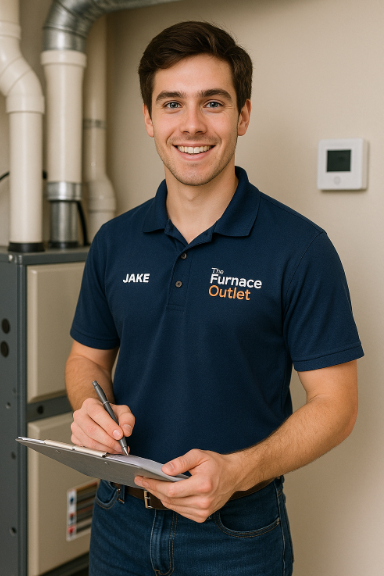Hey folks, Jake Lawson here.
Let me guess—you’ve got one of those old Trane XE1000 units outside your house, probably still chugging along like a ‘90s pickup truck. And sure, it might still work. But just like that old truck, it's burning way more gas (or in this case, electricity) than it should—and giving you outdated comfort levels in return.
So if you're here because you're looking for info on the Trane XE 1000 AC unit, the Trane XL 1000 heat pump, or you're just not sure whether your Trane XE1000 air conditioner is still worth keeping, you’ve come to the right place.
Let’s talk facts. Then I’ll give you a solid alternative that won’t leave you sweating bullets or watching your utility bills climb like a mountain goat.
The History Behind the Trane XE1000 and XL Series
Back in the ‘90s and early 2000s, the Trane XE1000 was one of the most popular central air units out there. You could find it on rooftops, next to garages, and behind homes all across America. Solid build quality. Good performance for the time. But that’s just it—for the time.
The Trane XL 1000 heat pump was its high-efficiency cousin, offering both heating and cooling capabilities. These systems were designed to last—and to their credit, many are still limping along today. But the HVAC world has changed dramatically in the last two decades.
Today, we’re dealing with new refrigerants, stricter efficiency standards, and smarter ways to manage your home’s temperature—and the XE1000 just doesn’t cut it anymore.
Outdated and Inefficient? Here’s the Breakdown
You may think, “If it ain’t broke, don’t fix it.” I get that mindset. But let’s look at what you’re really dealing with:
-
SEER Ratings: The XE1000 units generally had SEER ratings between 8 and 10. Compare that to modern systems that start at 14.5 SEER2 and go up to 20+ SEER. That’s nearly double the energy efficiency.
-
Refrigerant Issues: Most Trane XE1000 air conditioners use R-22 refrigerant, also known as Freon. The EPA phased it out in 2020. If your system needs a recharge, expect to pay a steep premium—or be told it’s not even available. Learn more about R-22 phase-out here.
-
Repair Costs: Finding parts for an older XE1000 is like looking for NOS parts at a classic car show—expensive and rare. Many techs recommend replacing rather than repairing at this point. According to HVAC Wiki, the average repair cost for legacy Trane units keeps rising every year.
So even if your XE1000 or Trane XL 1000 heat pump still powers on, you’re losing money every month it stays in service.
Are You Missing Out on Better Comfort?
Absolutely.
Today’s air conditioners don’t just blast cold air. They modulate temperature, control humidity, and connect to smart thermostats. You get more consistent comfort, fewer temperature swings, and better indoor air quality.
Newer systems like the Goodman 3 Ton 14.5 SEER2 R-32 bundle (which I’ll talk about shortly) also use eco-friendly refrigerants like R-32, which offers lower global warming potential and improved energy efficiency. Trane has a great primer on why SEER2 matters more than ever today.
Why the Goodman 3 Ton 14.5 SEER2 R-32 Bundle Is a Smart Replacement
Now let’s get to the alternative. If you’re looking for a modern, reliable system to replace your aging Trane XE 1000 AC unit, take a good look at this:
👉 Goodman 3 Ton 14.5 SEER2 R-32 Bundle
Why this system?
-
High Efficiency: With a 14.5 SEER2 rating, this system meets or exceeds current DOE regional efficiency standards—perfect for anyone looking to cut cooling costs.
-
Eco-Friendly R-32 Refrigerant: Better thermodynamic properties, lower environmental impact, and it uses less refrigerant charge than R-410A. Daikin has been a leader in promoting R-32 adoption globally, and now it's becoming standard in North America.
-
Durability: Goodman systems are built in the USA and known for affordability without compromising performance.
-
Perfect for Mid-Sized Homes: 3 tons is ideal for 1,500–2,000 sq. ft. homes, depending on insulation and layout.
-
Compatible With Smart Thermostats: Want to automate your climate and save money? Pair this with an Ecobee or Nest for even more control.
Trane vs Goodman: What You Need to Know
Let’s be honest—Trane built a great reputation, but Goodman has come a long way and is backed by the same parent company as Amana. That means better pricing, widespread availability of parts, and improved technology across the board.
Cost-wise, a new Trane system can run you 20–30% more than a comparable Goodman. Unless you’re married to the brand, it’s hard to justify paying that much more when systems like the Goodman R-32 bundle offer similar or better performance.
Don’t just take my word for it—check out this HVAC comparison guide from Modernize for an unbiased breakdown of both brands.
Why Now Is the Time to Upgrade
If you’ve been holding onto your Trane XE1000, I get it. No one wants to drop thousands unless they have to. But the longer you wait:
-
The more you’ll pay in utility bills
-
The harder it’ll be to find replacement parts
-
The more expensive emergency replacement becomes when it finally gives out
And let’s not forget—new systems often qualify for rebates, tax incentives, and local utility kickbacks. You could save hundreds just for upgrading to an energy-efficient system. Check Energy Star's rebate finder to see what’s available in your area.
Final Thoughts from Jake
If you’re still hanging onto a Trane XE1000 air conditioner, I respect the loyalty. But it’s time to retire that relic and invest in something that’ll give you better comfort, cleaner air, and real savings.
The Goodman 3 Ton 14.5 SEER2 R-32 bundle is a solid, smart move—and it’s built to give you another 15–20 years of reliable service.
No more guessing. No more surprise breakdowns. Just good, solid HVAC.
Catch y’all next time,
– Jake







